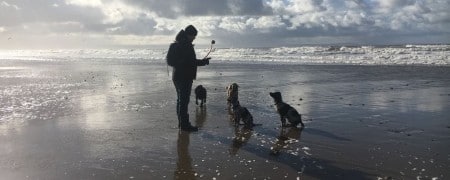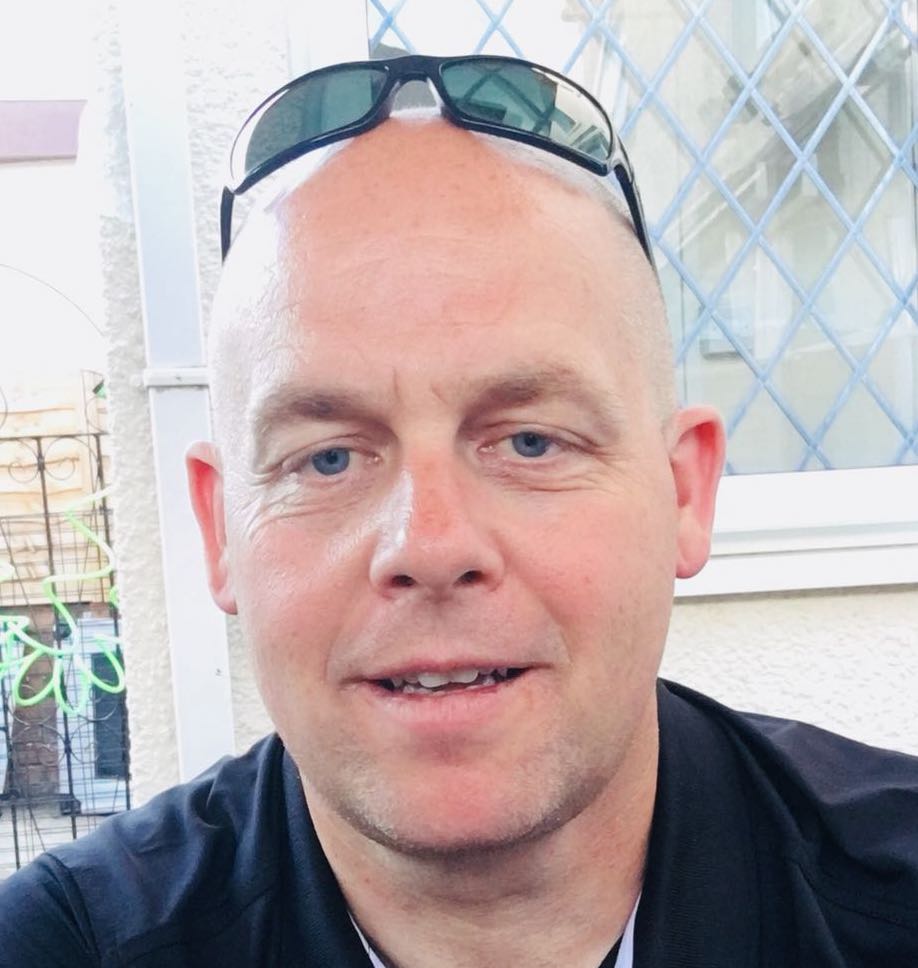Aneurysm In My Chest Was A Time Bomb Waiting To Explode – A Patient’s Story


Wed 18 July 2018
On the 1st of January 2018, Christopher Webbley, a 46 year-old assistant retail manager from Cardiff, felt a pain in his chest. Unsure whether it was simply acid reflux or a possible heart attack, he went to hospital. Despite being reasonably fit and active, he was overweight, which was a cause for concern. Nothing conclusive was found at the time, but on the 15th of February, he was contacted by his local doctor’s surgery. His x-rays had been re-examined and a shadow near his heart could be seen, which they suspected was an aortic aneurysm. Christopher wasn’t previously aware of how potentially life-threatening aneurysms can be and was horrified at just how at risk his life was.
What is it?
An aneurysm is when the wall of an artery weakens, creating a bulge. The aorta is the artery that carries the blood from your heart to the rest of your body. It is normally about 2 to 3cm wide. But if you have an aortic aneurysm, the artery can grow – sometimes rapidly to over 5cm in width. When this happens, the thinning artery wall can burst, causing severe internal bleeding with fatal consequences.
There are two types of aortic aneurysms: abdominal (found in the abdomen below the kidneys) or thoracic (found in the chest). Thoracic aortic aneurysms are less common, making up only 25% of all aortic aneurysms. If the aneurysms are less than 5cm, treatment can be a case of watchful waiting, with regular check ups to ensure it hasn’t got bigger.
Christopher was told that his thoracic aortic aneurysm was 5.5cm in width and could rupture at any moment. The advice he was given was to live like an old man – not taking on anything that could put strain on his heart, which could cause it to rupture.
Finding help:
He and his family immediately began searching online to find out what the best course of action was. He came across Mr Birdi, a cardiothoracic surgeon based in London and made an appointment at the London Heart Clinic for the following week, despite it involving a drive half way across the country.
Mr Birdi re-examined Christopher and told him that his aneurysm was actually closer to 6cm and would require urgent surgery. One of the challenges Christopher had was that the aneurysm was close to his aortic valve. Valves control the flow of blood in and out of the heart. They are exceptionally hard working parts of a body and it is always better – if possible – to save a valve than to replace it. If a valve is replaced, it is either a metal valve, which then requires the patient to be on blood thinning medication for the rest of their life, or they have to use a valve from a cow or pig, which are not as long lasting and will need to be replaced again in the future.
Christopher explains how he felt learning all of this.
“Mr Birdi wasn’t pushy, he had an aura about him. I felt confident that he would fix me. He was so passionate about what he could do. As upsetting as it was to learn about the danger I was in, I felt I could trust him. He didn’t sugar coat anything. He simply told me the facts and what he would do to solve the problem. I left feeling confident that I was in excellent hands.”
Christopher’s surgery was scheduled for the 2nd of March, less than a week later, at the Essex Cardiothoracic Centre.
Mr Birdi specialises in keyhole heart surgery, however, as Christopher’s aneurysm was in the ascending aorta in the arch above the heart, full breastbone surgery was required.
In order to operate on that part of the heart, the surgical team had to stop blood circulating in the body while maintaining blood flow to the brain. To do this, Christopher’s body had to be cooled to 20°C while special pipes were put into the carotid arteries to ensure the brain received blood, while diverting blood away from the heart. Called ‘Circulatory arrest with antegrade cerebral perfusion’, it’s a complex procedure that can result in a stroke if the brain doesn’t get enough blood supply.
The surgical team was led by Mr Birdi and included another expert heart surgeon, Mr Singh. Together they removed the weakened bit of artery wall and replaced it with a special fabric in a procedure called a Dacron Graft. The manmade fabric acts as the new artery wall and over a relatively short time, will become lined with endothelium, a thin membrane that lines the inside of the heart and blood vessels. Mr Birdi and his team also managed to refloat Christopher’s own valve, rather than having to replace it, which is by far the best option. Once the surgery was complete, they slowly rewarmed Christopher and his own circulation took over.
The intensive 8-hour surgery was a success. Although Christopher suffered a mini stroke that caused some initial weakness and shaking on his left side, those symptoms soon reversed themselves. He also had a pacemaker fitted a few days post surgery to regulate his heartbeat.
“With complex procedure’s like this, the risks are high but we were very pleased with Christopher’s outcome. His aneurysm was removed, his aortic valve was saved and it works perfectly. Had he not had the surgery, it was very likely that his aneurysm would have ruptured, which would probably have been fatal.
“We’ve since seen Christopher for his 6 week post surgery check up and he was doing well.”
How is Christopher now?

It typically takes 6 months to recover from a surgery like this, as the breastbone needs time to repair itself. Christopher has been going to physio to build his strength back up. He is getting stronger and hopes to return to work at least part time in August, a month earlier than anticipated.
He explains that it’s taken some getting used to:
“Physically I am doing well. I’m trying to take things slowly and let my body heal, but it is frustrating when I can’t do things like help my partner with heavy bags or take my dogs for a walk on the lead. That will improve once I’m fully recovered though. The after care and physio, combined with lifestyle and dietary advice has been brilliant.
“Mentally, it still plays on my mind that I was so close to a potentially fatal rupture. Part of my healing process is to now help others. Mr Birdi was so spot on with his diagnosis and the way he helped me, I feel I owe it to him and others in his profession to do what I can to help them.”
Christopher has set up a JUSTGIVING page to help raise awareness of aortic aneurysms and funds for a cardiac robot, a machine that is operated remotely by the heart surgeon with highly precise movement and micro-sutures through tiny incisions. The innovative machines cost hundreds of thousands of pounds. You can donate to his cause here.
“I am so incredibly grateful to Mr Birdi and his team. I am 100% confident in everything they have done. If everyone had a Mr Birdi on their side, it would be great.’
Four months after having his surgery, Christopher finally received a call from his local hospital saying that they could get him an appointment with a heart specialist. Had he waited, he probably wouldn’t be here today.
How to spot the symptoms of thoracic aortic aneurysm:
One of the challenges with this type of aneurysm is that people often don’t have any symptoms unless it bursts. But if it starts to expand, it could push on surrounding tissue or nerves in your chest, causing:
· chest pain, or pain in your neck, back, or the top of your stomach
· difficulty breathing or shortness of breath
· coughing
· wheezing
· hoarseness
· difficulty swallowing
If the aorta wall suddenly ruptures, you may get a sudden and severe pain in your chest or back, which you might think is a heart attack. You should get immediate medical attention as it could cause severe internal bleeding and emergency surgery may be necessary.
How to reduce the risk of aneurysm:
Quit smoking if you are a smoker
Lose weight if you are overweight
Keep an eye on your blood pressure
Take steps to lower your cholesterol
If you have a history of aneurysm in your family, get yourself screened regularly
To donate to Christopher’s Aneurysm Awareness Program click HERE
To find out more about Mr Birdi’s services, visit the website HERE
Get in touch with our expert team at our Essex Heart Clinic.

